Time: One Hour
Objective: Students will study excerpts from FDR’s 1937 fireside chat proposing to enlarge the size of the Supreme Court and analyze editorial cartoons about reactions to it. Students will participate in small group and whole class discussions on the following topics:
- Analyze FDR’s Court-packing plan
- Interpret political cartoons reacting to the plan
- Discuss the three branches of government
Sources:
- Secondary Source: 14 minute online documentary “FDR and the Court-packing Controversy.”
- Primary Sources: FDR’s Court-packing proposal, political cartoons.
ACTIVITY — Students watch documentary “FDR and the Court-packing Controversy” as a class.
The documentary is divided into 10 sections and can be stopped and started easily, which allows teachers to show it in chunks to ensure student comprehension.
PRIMARY SOURCE ACTIVITY — In class they will read this excerpt from FDR’s March 9, 1937 Court-enlargement plan and discuss it in small groups.
“What is my proposal? It is simply this: whenever a judge or justice of any federal court has reached the age of seventy and does not avail himself of the opportunity to retire on a pension, a new member shall be appointed by the president then in office, with the approval, as required by the Constitution, of the Senate of the United States.
That plan has two chief purposes. By bringing into the judicial system a steady and continuing stream of new and younger blood, I hope, first, to make the administration of all federal justice, from the bottom to the top, speedier and, therefore, less costly; secondly, to bring to the decision of social and economic problems younger men who have had personal experience and contact with modern facts and circumstances under which average men have to live and work. This plan will save our national Constitution from hardening of the judicial arteries.
The number of judges to be appointed would depend wholly on the decision of present judges now over seventy, or those who would subsequently reach the age of seventy.
If, for instance, any one of the six justices of the Supreme Court now over the age of seventy should retire as provided under the plan, no additional place would be created. Consequently, although there never can be more than fifteen, there may be only fourteen, or thirteen, or twelve. And there may be only nine.”
- What is President Roosevelt proposing?
- What are two reasons Roosevelt gives to justify his plan?
- According to Article III in the U.S. Constitution, who decides the number of Supreme Court Justices authorized to sit on the bench?
The judicial Power of the United States, shall be vested in one supreme Court, and in such inferior Courts as the Congress may from time to time ordain and establish. The Judges, both of the supreme and inferior Courts, shall hold their Offices during good Behaviour, and shall, at stated Times, receive for their Services, a Compensation, which shall not be diminished during their Continuance in Office.
- Would Article III of the Constitution need to be amended to implement FDR’s plan?
Then have students read this quote, also from FDR’s plan, and discuss in small groups:
“But since the rise of the modern movement for social and economic progress through legislation, the Court has more and more often and more and more boldly asserted a power to veto laws passed by the Congress and by state legislatures in complete disregard of this original limitation which I have just read.
In the last four years the sound rule of giving statutes the benefit of all reasonable doubt has been cast aside. The Court has been acting not as a judicial body, but as a policymaking body.”
- What are FDR’s real motives for his Court enlargement plan?
- Who would appoint the six new Justices?
- How would appointing new Justices affect how the Supreme Court treats FDR’s New Deal legislation?
ACTIVITY — Analyze Cartoons with the whole class
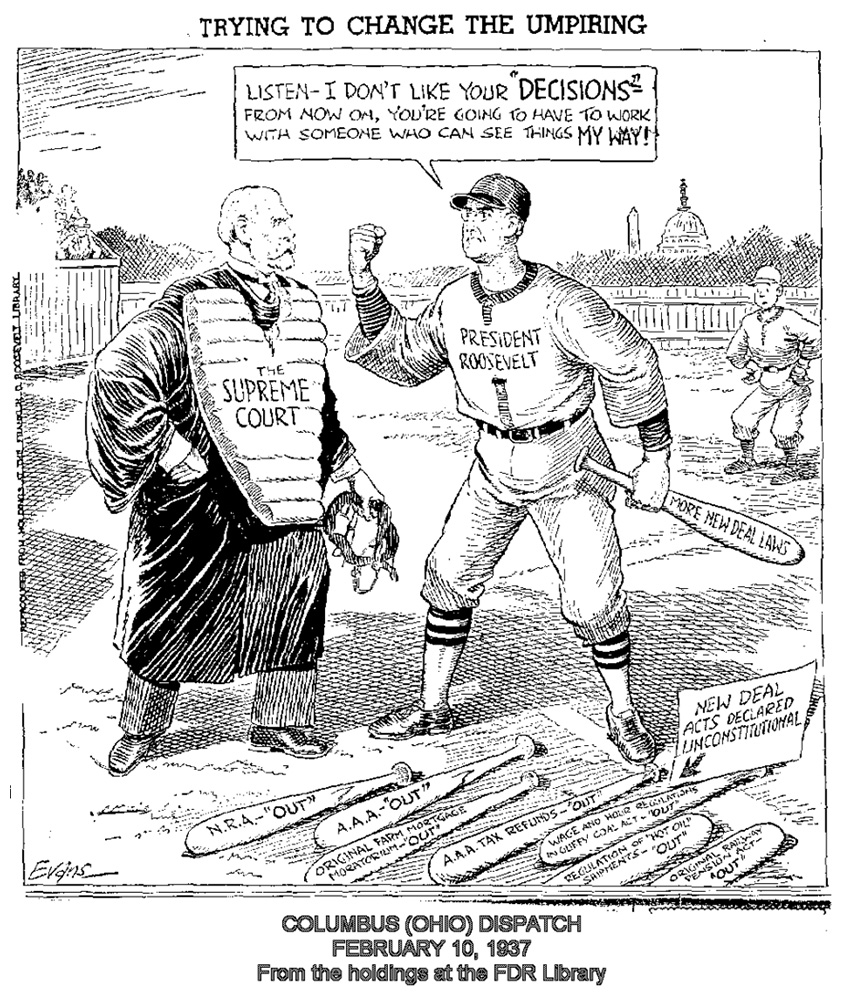
Cartoon #1: This baseball cartoon shows FDR criticizing the Supreme Court and holding bats marked with the President’s proposed legislation that the Justices have ruled unconstitutional. Discuss why FDR is angry with the Supreme Court.
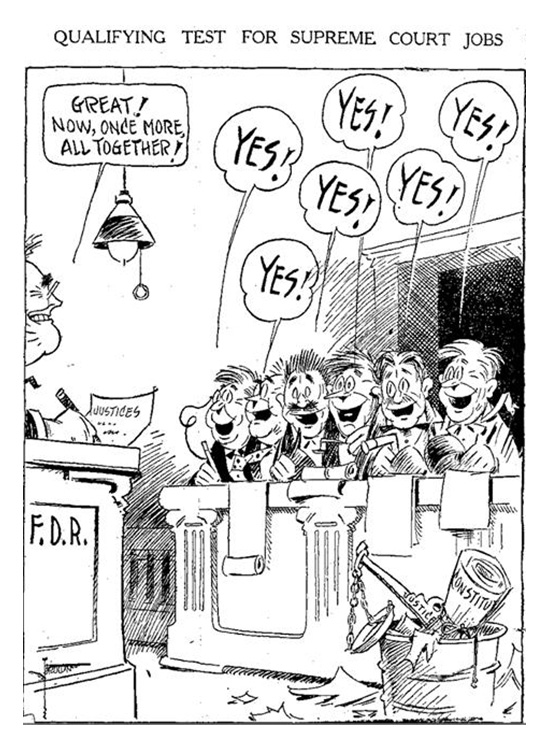
Cartoon #2: (Edward S. Brown, New York Herald Tribune, February 12, 1937.) This cartoon shows FDR as the conductor and the Justices singing a choir of “Yes!Yes!Yes!” because his six new appointees would all support his New Deal programs. Ask students what shows that the cartoonist believes FDR is abusing his executive power? (The Constitution and scales of justice in garbage).
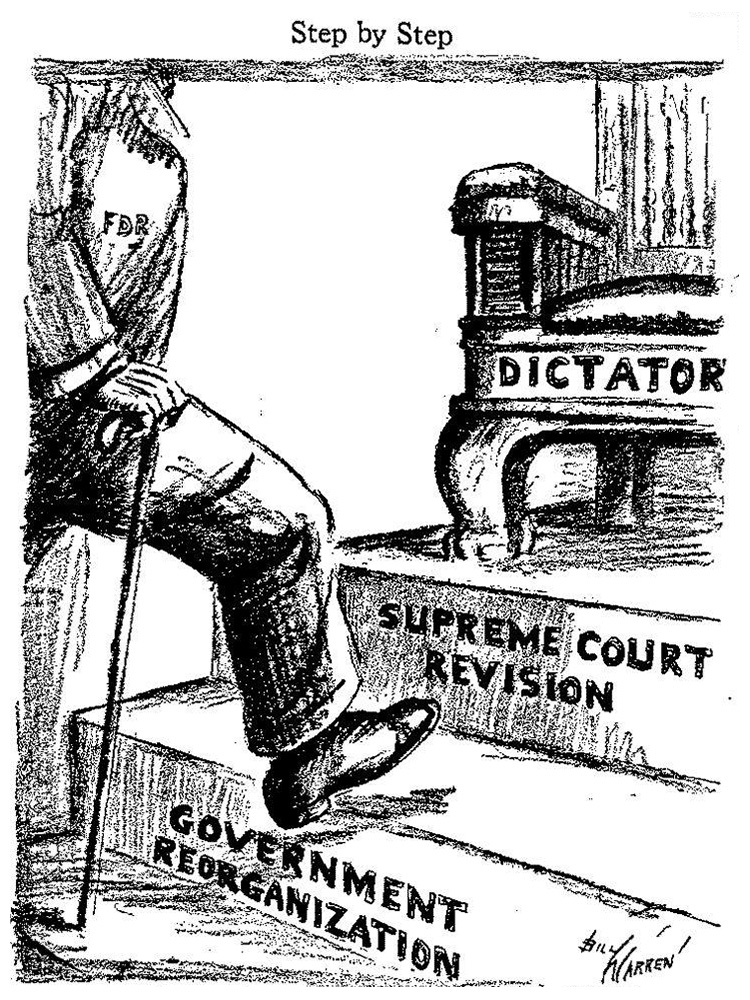
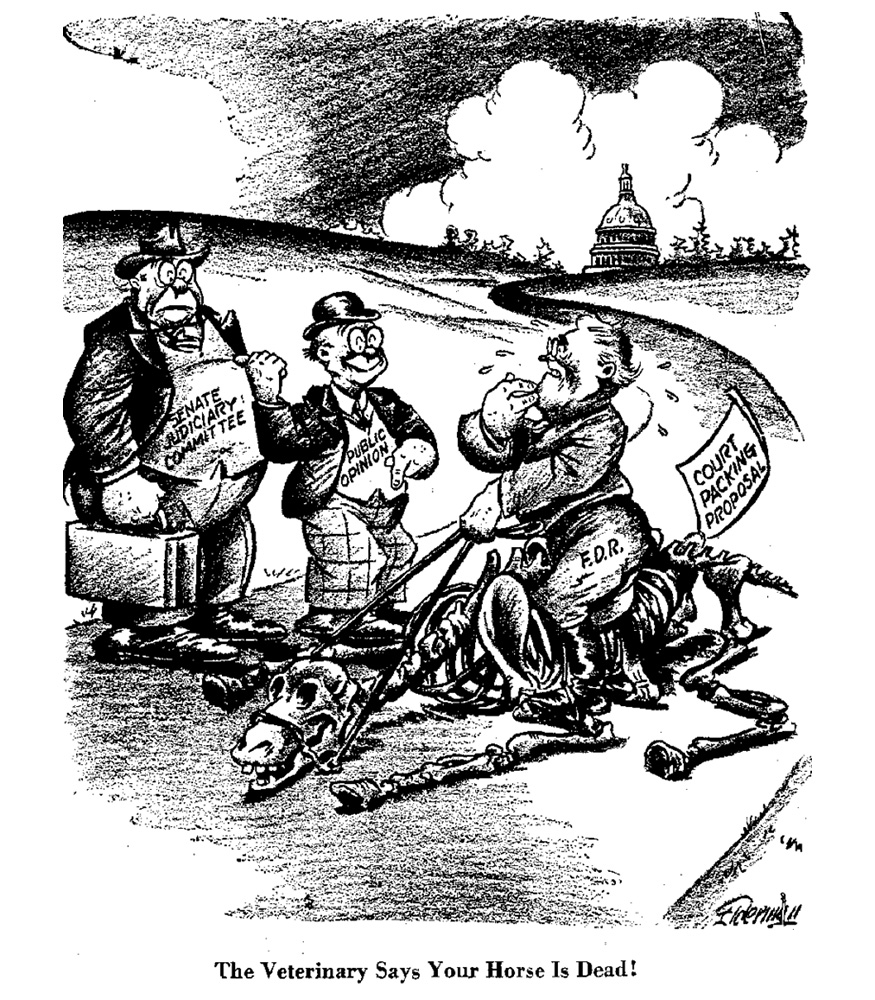
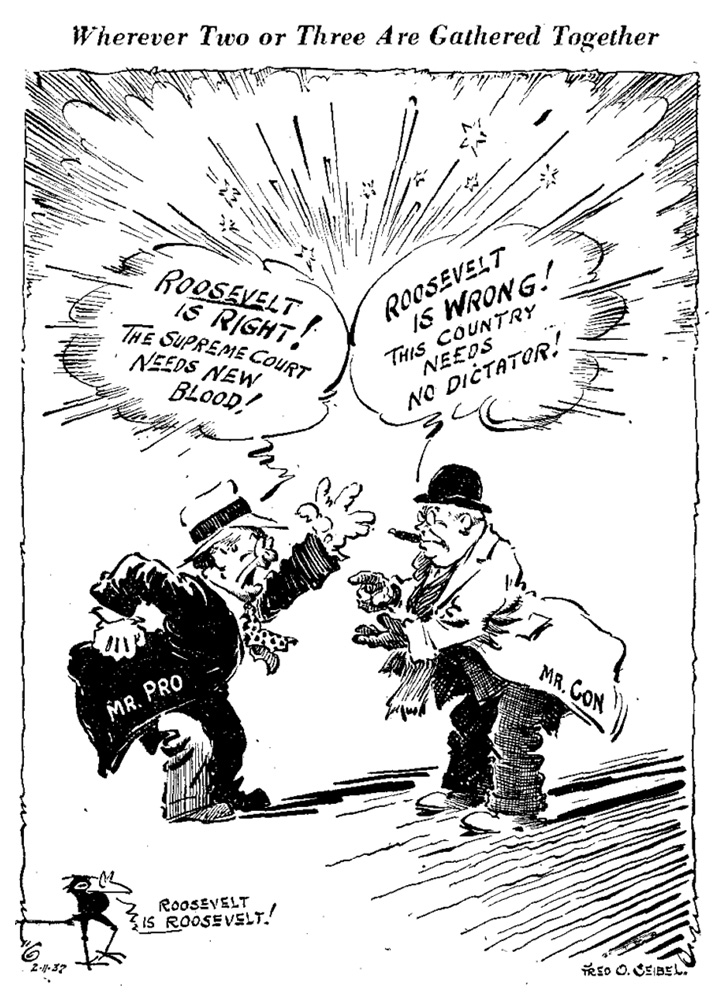
Assessment: Have students answer two questions on their own about this cartoon from the Richmond Times, February 11, 1937.
- Explain what is Mr. Pro’s rationale for supporting FDR’s plan to enlarge the size of the Court?
- Explain why Mr. Con is objecting to the plan.




